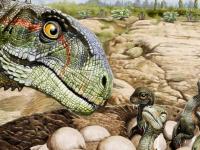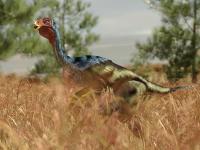The Coolest Paleontology Discoveries of the Decade (2010s)

There have been countless amazing discoveries across the past decade in the field of paleontology. To try to narrow those down to a “best of” list is an asinine endeavor, one that I’ve undertaken out of some sort of masochistic delusion.
But really, take this more as a summary of the things I’ve found interesting.
1.) Yutyrannus huali
Dinosaurs are undeniably the “face” of paleontology. And when people think of dinosaurs, they think of Tyrannosaurus rex. So any discovery that alters what we think of T. rex in a dramatic way is going to be a big deal. Enter Yutyrannus huali.
First described and named in a 2012 paper by Xu Xing et al, Yutyrannus was a tyrannosauroid that measured nearly 30 feet in length, and was covered with feathers. While the existence of feathered dinosaurs was speculated about as far back as the 1960s (and was confirmed with the description of Sinosauropteryx in 1996), Yutyrannus dramatically increased the size range of known feathered dinosaurs.

It further suggested that the most famed dinosaur of all may have also borne plumage. While we have no direct evidence of feathers on Tyrannosaurus rex itself, the fact that one of its earlier relatives had them allowed paleoartists to begin rendering the Tyrant Lizard King with varying degrees of “floof.” It’s now become fashionable to dress the face of paleontology in a coat of feathers, and for that, Yutyrannus earns a spot on this list.
2.) Cellular life is at least 3.9 billion years old
In 2018, Holly Betts et al published a paper proposing that the last universal common ancestor (LUCA) — a hypothetical ancestor of all cellular life — lived earlier than previously believed. The team used a combination of fossils, genetics, and molecular clock analyses to determine that the LUCA existed at least 3.9 billion years ago, still during the Late Heavy Bombardment (a time period during which it’s believed the Earth was pelted by an unusually high number of asteroids).
This is interesting for a number of reasons. Firstly, it pushes the origins of life back at least 100 million years from the previously oldest potential fossils, and about 500 million years back from the earliest confirmed fossils. Furthermore, it shows how resilient life is, that it may have emerged during a period in which scientists had previously speculated that Earth was sterile.
3.) Oh, the colors
One of the most notable discoveries of the decade arrived with a 1-2 punch combination of papers published in the beginning of 2010. Since the first discovery of dinosaurs, everyone from scientists to artists to toymakers to the general public have speculated as to what colors they might have been when alive.

Thanks to the work of two independent research teams, we’ve learned the color patterns for two species of feathered dinosaur – the aforementioned Sinosauropteryx, and the bird-like Anchiornis. By comparing the melanosomes (the cell organelles that contain pigment) in living bird feathers to fossilized structures, we now know that Sinosauropteryx bore colored rings on its tail, not entirely unlike a raccoon. The study of Anchiornis went further, giving us the first full-color view of a dinosaur’s entire body.
AIPT Science is co-presented by AIPT and the New York City Skeptics.
Source: www.adventuresinpoortaste.com/








